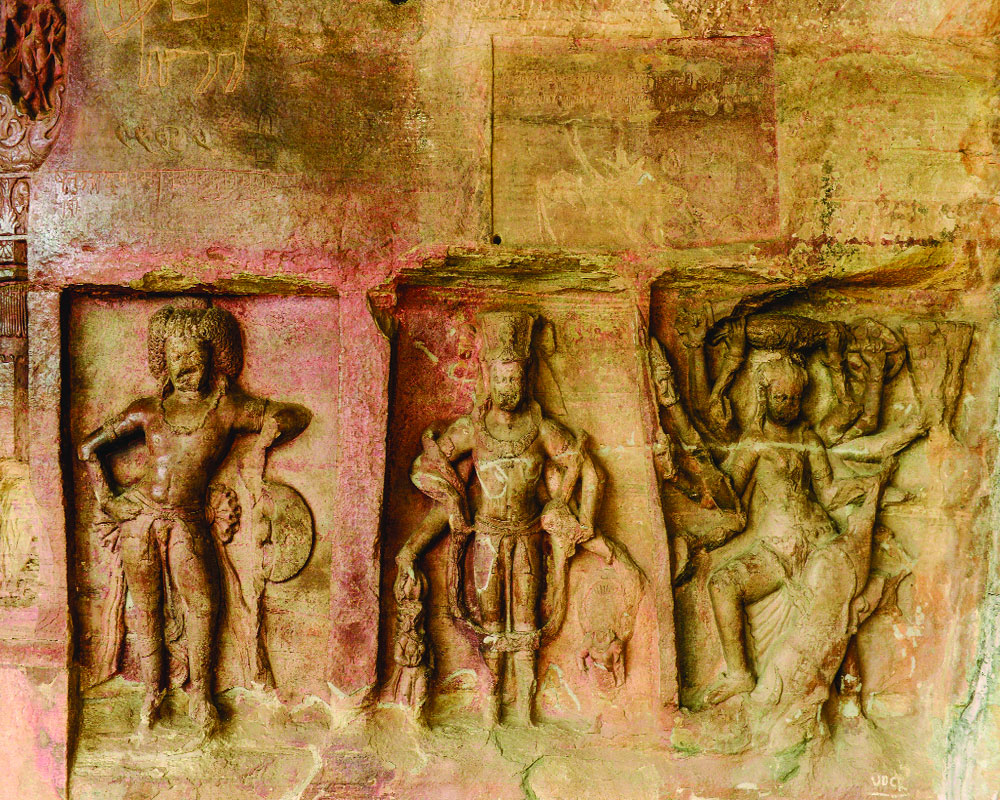Kushan Mitra witnesses sculptures that document the beginnings of some of our religious practices
Sometimes when you make fascinating discoveries at a hitherto unseen Indian historical site (quick aside: while I’m a child of two history scholars, I did read English Literature in college), it makes you wonder how much of the past have we lost. Lost to time and to a people who live in the now and do not care about history — an awful truth about much of India. And yet, you sometimes see a place like the Udaygiri Caves and are grateful for what we have not lost. Partially the reason why a place like this survived was because these were carvings of Hindu gods in a very religious part of the country that was rarely conquered by outsiders and also the fact that Madhya Pradesh, unlike the Gangetic plains, is not teeming with humanity at every nook and cranny. Yes, the Udaygiri Caves are located beside a small village where farmers till the lands fed by the Betwa River.
These caves are located on a lone hill, about half an hour’s drive from Sanchi, through some lovely rural roads where the brilliant surface is coupled with a few twists and turns and an overall lack of traffic making it an excellent drive on the new Hyundai i20. Seriously, this little hatchback with its small terrier of an engine is the perfect car to drive through these parts. You eventually arrive at the site where construction of a new visitor centre seems stalled although, given the pandemic and the drop in visitor numbers as a result, that should not be surprising. Unlike the Buddhist sites Udaygiri does not attract religious pilgrims. Sanchi, for example, attracted thousands of Sinhalese Buddhists every month and there was even talk of a direct flight between Bhopal and Colombo.
According to inscriptions found at the site, most of these — particularly the famous carvings of Varaha and the sleeping Vishnu — were done during the reign of King Chandragupta Vikramaditya (aka Chandragupta II). The work was supervised by his minister of war and peace Virasena. The work was continued by his heir Kumaragupta and most of the early caves are dated back to the early 400’s CE. Later emperors and kings added to the complex. While the relief carved onto the caves are clearly Hindu, newer caves depict Buddhist and Jain mythology and legend as well. The Archaeological Survey of India has done a great job of preserving many of the caves although gating many cave entrances means that photography is often quite difficult. Thankfully, small mobile phone camera lenses can capture the interiors. While I agree that, it is a good idea to prevent the desecration of the caves, the ASI could use clear glass or perspex barriers instead of gating everything. At the Maladevi Temple, one understood that going inside was risky, because of the structural integrity issues, but here that was not a problem. You therefore tend to not clearly see the unique ‘Mukhalinga’ inside Cave 4 where a face is depicted on the lingam.
There are several very interesting sculptures across the Udaygiri Cave complex, but among the most fascinating was Cave Number 5, extremely prominent and visible from the road itself. Inside the cave is a temple to Kartikeya and the tremendous sculpture of Vishnu as ‘Varaha’ (the boar) saving the Earth Goddess Bhudevi from the demon Hiranyaksha while the other gods and goddesses look at him from above. What is interesting is not just this sculpture but some of the surrounding ones, notable among them being Ganesha. While the elephant-headed god is a staple in many Indian households today, this is actually the earliest known example of Ganesha in this form.
And on the same rockface, but in Cave 6, is also the earliest known representation of Mahisasurmardini, the 10-handed Durga riding a lion, slaying the demon Mahisasur. Every year, Bengalis worship the protima (idol) of Durga doing this but seeing the first known example from 1,600 years ago is quite something. There is also the fascinating Cave 13 where a reclining Vishnu (as Narayana). As most of the other caves are quite small, you might miss a few of them. Nevertheless, the walk up to the summit is worth it, if for nothing else, for the brilliant view of the Betwa floodplains from the top and also the fact that much of the local plant population has also survived here and hasn’t been replaced by European imports.
Next up, in the final part of the Great India Drive with The Pioneer, we will write about our journey to Satdhara and the huge and unknown Stupa complex there.


























